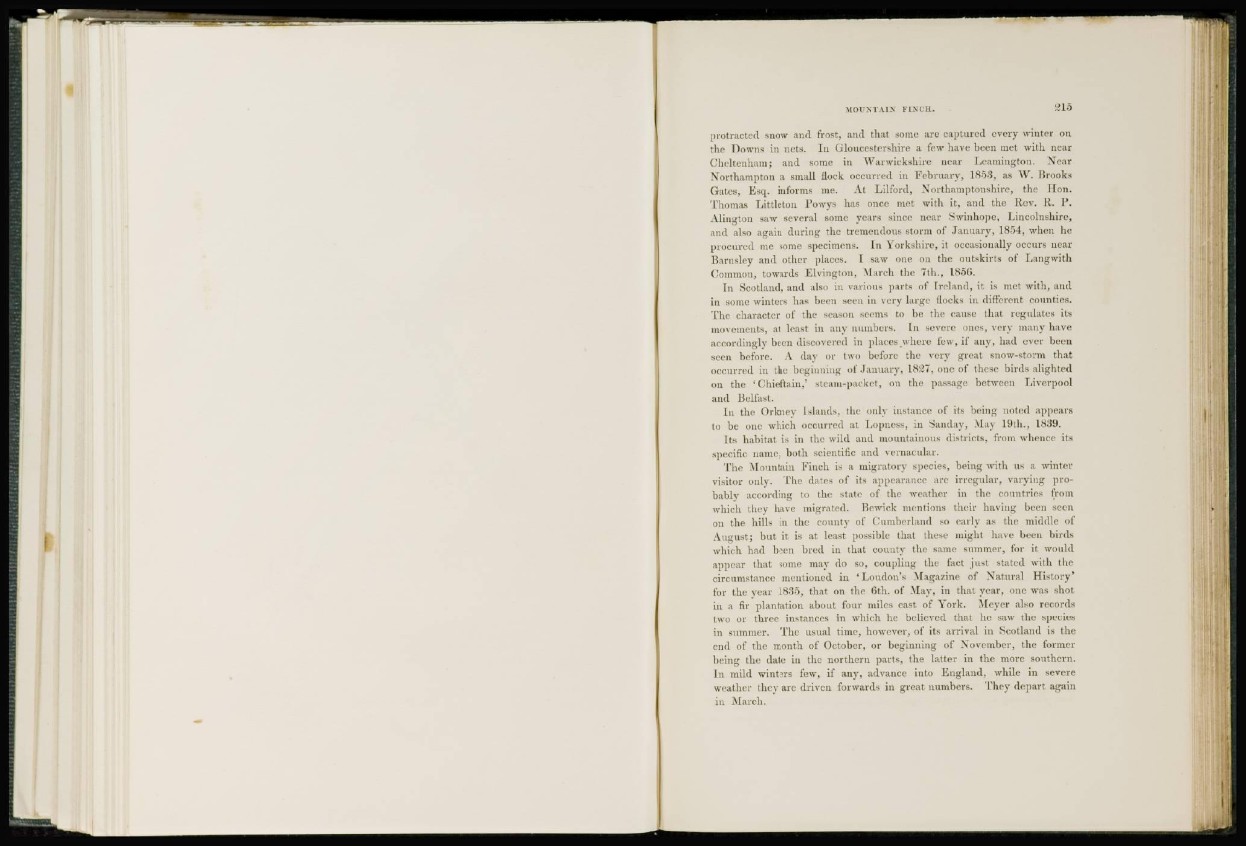
protracted snow and frost, and that some are captured every winter on
the Downs in nets. In Gloucestershire a few have been met with near
Cheltenham j and some in Warwickshire near Leamington. Near
Northampton a small flock occurred in February, 1853, as W. Brooki
Gates, Esq. informs me. At Lilford, Northamptonshire, the Hon.
Thomas Littleton Powys has once met with it, and the Rev. It. 1'.
Alington saw several some years since near Swinhope, Lincolnshire,
and also again during the tremendous storm of January, 1854, when he
procured me some specimens. In Yorkshire, it occasionally occurs near
Barnsley and other places. I saw one on the outskirts of Langwith
Common, towards Elvington, March the 7th., 185(5.
In Scotland, and also in various parts of Ireland, it is met with, and
in some winters has been seen in vcrv large flocks in different counties.
The character of the season seems to he the cause that regulate-- its
movements, at least in any numbers. In severe ones, very many have
accordingly been discovered in places where few, if any, had ever been
seen before. A day or two before the very great snow-storm that
occurred in the beginning of January, 1827, one of these birds alighted
on the ' Chieftain," steam-packet, on the passage1 between Liverpool
and Belfast.
In the Orkney Islands, the only instance of its being noted appears
to be one which occurred at Lopness, in San day, May 19th., 1839.
Its habitat is in the wild and mountainous districts, from whence its
specific name, both scientific and vernacular.
The Mountain Finch is a migratory species, being with us a winter
visitor only. The dates of its appearance arc irregular, varying probablv
according to the state of the weather in the countries from
which they have migrated. Bewick mentions their having been seen
on the hills in the county of Cumberland so early as the middle of
August; but it is at least possible that these might have been birds
which had been bred in that county the same summer, for it would
appear that some may do so, coupling the fact just stated with the
circumstance mentioned in ' Loudon's Magazine of Natural History'
for the year 1835, that on the fith. of May, in that year, one was shot
in a fir plantation about four miles cast of York. Meyer also records
two or three instances in which he believed that he saw the species
in summer. The usual time, however, of its arrival in Scotland is the
end of the month of October, or beginning of November, the former
being the date in the northern parts, the latter in the more southern.
In mild winters few, if any, advance into England, while in severe
weather they are driven forwards in great numbers. They depart again
in March.